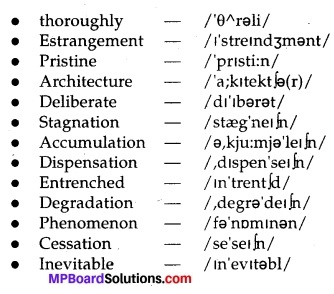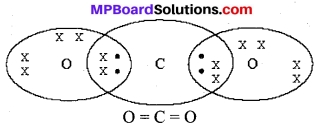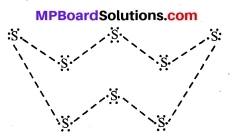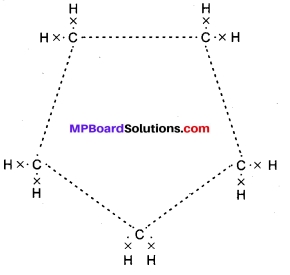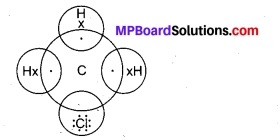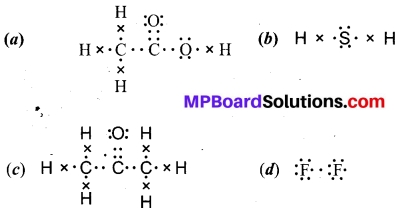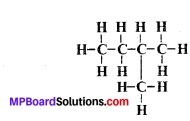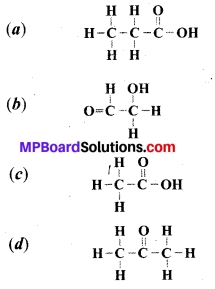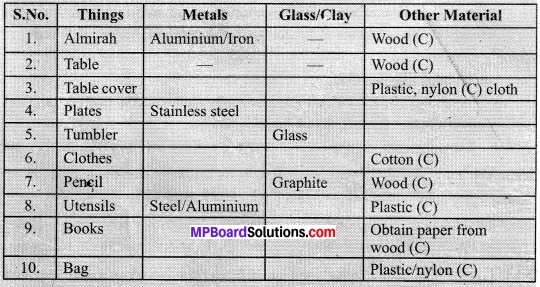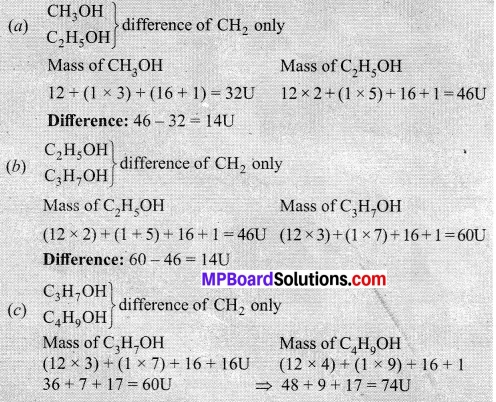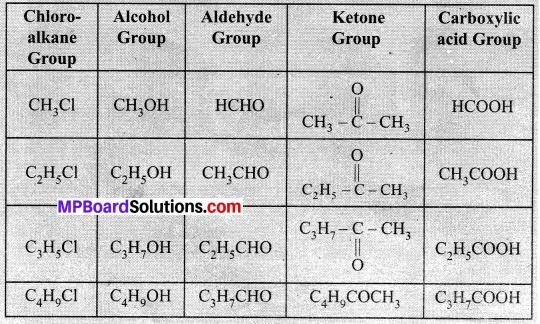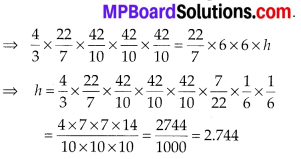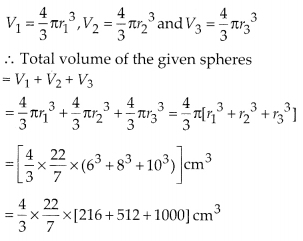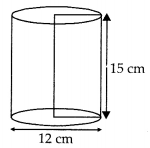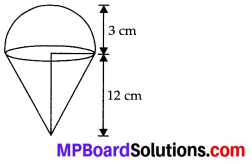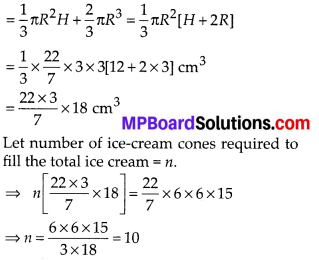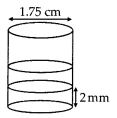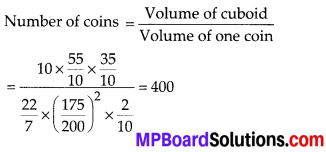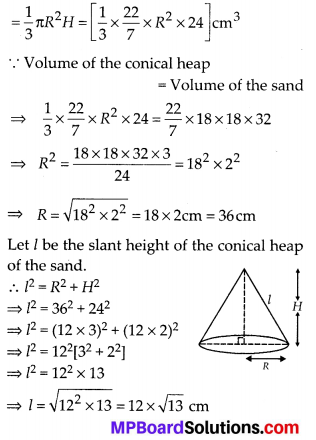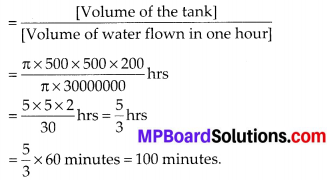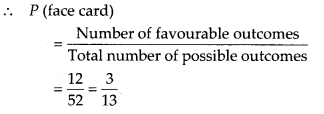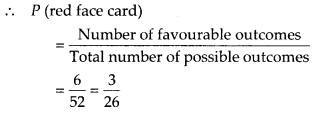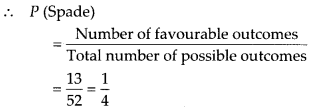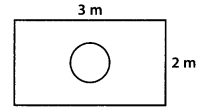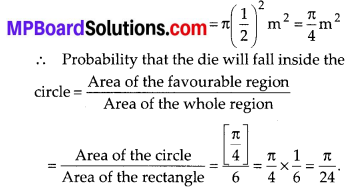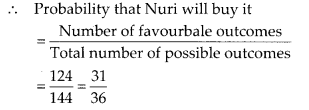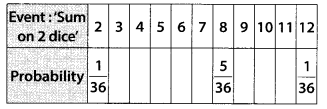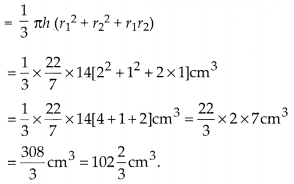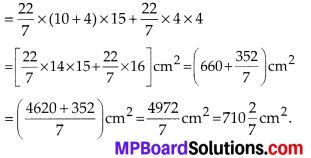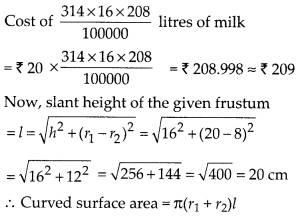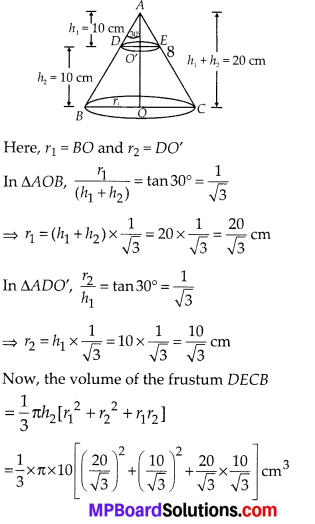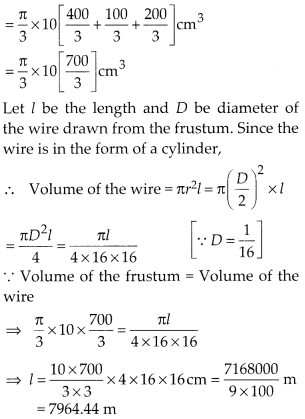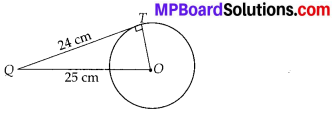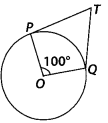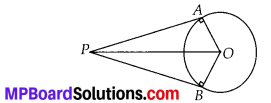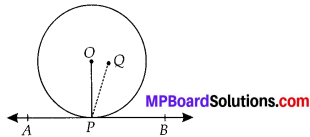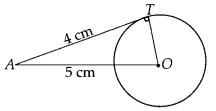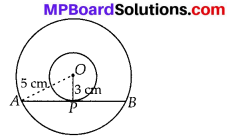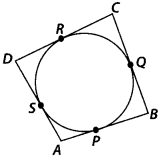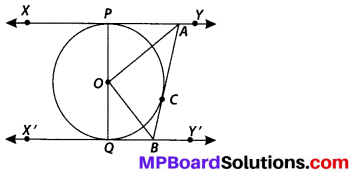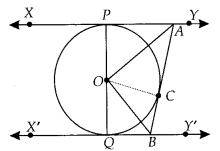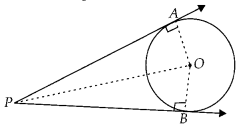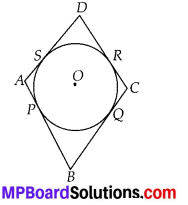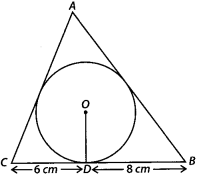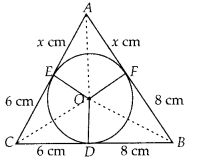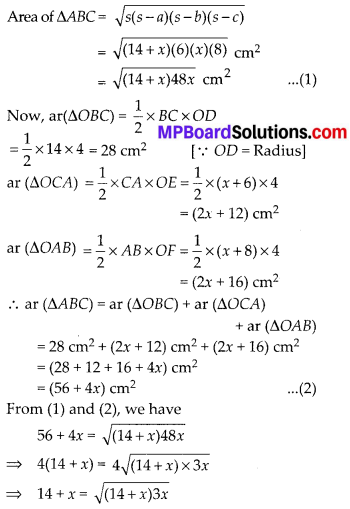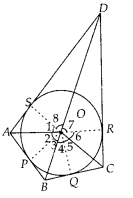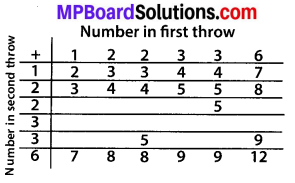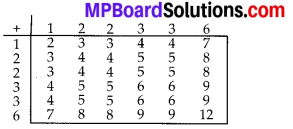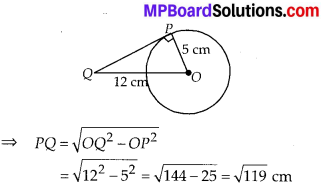Are you seeking for the Madhya Pradesh Board Solutions 10th English Chapter 11 Mending Wall Questions and Answers PDF? If yes, then read this entire page. Here, we are giving a direct link to download MP Board Class 10th English Solutions Questions and Answers PDF which contains the chapter wise questions, solutions, and grammar topics. You can also get the shortcuts to solve the grammar related questions on this page.
MP Board Class 10th English The Rainbow Solutions Chapter 11 Mending Wall (Robert Frost)
For the sake of students we have gathered the complete 10th English Chapter 11 Mending Wall Questions and Answers can provided in pdf Pattern. Refer the chapter wise MP Board Class 10th English Solutions Questions and Answers Topics and start the preparation. You can estimate the importance of each chapter, find important English grammar concepts which are having more weightage. Concentrate on the important grammar topics from Madhya Pradesh Board Solutions for 10th English Chapter 11 Mending Wall Questions and Answers PDF, prepare well for the exam.
Mending Wall Textbook Exercises
Mending Wall Vocabulary
Question 1.
What is the meaning of the following words in the poem?
mending, spell, pine, fences, savage.
Answer:
Word – Meaning
Mending — repairing, restoring to a sound state.
Spell — magic, charm.
Pine — trees which yield turpentine.
Fences — hedges, structure of bricks, stones etc. to make partition.
Savage — wild, cruel or violent/fierce, uncivilized and rude.
Question 2.
The word ‘good’ has different meanings in the following sentences. What are they?
(i) A boy from a small town who made good in Mumbai met me yesterday.
(ii) Milk is good for you.
(iii) Take a good look at it.
(iv) Did you have a good time at the party?
(v) We travelled a good distance.
(vi) We must reach the station in good time.
Answer:
(i) settled, (ii) useful, (iii) loving, (iv) nice, (v) great, (vi) before.
Question 3.
The following words begin with the letter ‘s’. How do you
pronounce the following words?
something, spell, said, see, stove, savage, sends, stone, spring.
Answer:

Comprehension
A. Answer the following questions in about 25 words.
Question 1.
Why do hunters make gaps in the wall between the land holdings of the poet and his neighbour?
Answer:
There is a wall between the land holdings of the poet and his neighbour. The hunters keep dogs with them. The dogs start yelping to tell the hunters where the rabbit is hiding. The hunters make gaps in the wall to pull the rabbit out of its hiding places under the wall.
Question 2.
When does the poet find gaps in the wall between his and his neighbour’s land holdings and why does he not find them earlier than that time?
Answer:
The poet finds gaps in the wall between his own and his neighbour’s land holdings during spring when he goes there. Spring season is the normal mending time. He does not find them earlier than that time (spring) because no one had seen or heard the gaps made.
Question 3.
How do the poet and his neighbour set the wall between them once again?
Answer:
The poet and the neighbour meet one day to set the wall. Each of them keeps to his own side of the wall. They walk along the line of the wall. They pick up the flat and round stones fallen to their sides. They balance one stone above the other.
Question 4.
Why does the poet tell his neighbour that they do not need a wall between them and how does his neighbour respond to his statement?
Answer:
There were no cows there to wander into the neighbour’s field and destroy the crop. Therefore, the poet tells his neighbour that they do not need a wall between them (their fields). The neighbour responds to his statement saying good fences make good neighbours.
Question 5.
What does the poet like to know before building a wall and why?
Answer:
The poet feels no need of raising the wall between his land holdings and those of his neighbour’s. Before building a wall he likes to know the following things:
(a) What he was walling in or walling out?
(b) Whom would he offend if the wall is not built?
Question 6.
Explain:
“I could say ‘elves’ to him,
But it’s not elves exactly, and I’d rather he said it for himself.”
Answer:
The poet thinks that ‘elves’ don’t love a wall. Rather they want it pulled down. But the next moment he says, “It is not ‘elves’ exactly.” He is not certain who or what it could be. The poet wishes that like him his neighbour too had no love for walls and fences.
B. Answer the following questions in about 50 words.
Question 1.
“Good fences make good neighbours.” Explain the meaning of this statement in the context of ‘Mending the Wall’.
Answer:
The poet is of modern views. He does not move in the inner darkness of narrow-mindedness. He is open-hearted. However, his neighbour is narrow-minded. He fears that the poet’s apple trees will get across his orchard and eat the cones under his pines. Moreover, the cows may enter his fields and damage the crops. He sticks to his ancestral and traditional views. Twice in the lesson he says, ‘Good fences make good neighbours’. It means he is a savage. He believes that the fences are a sure remedy against quarrels, misgivings, bickerings and mental differences. He does not mind the physical pain and labour in building the fence. No encroachment or trespassing would be possible then.
Question 2.
What nation in regard to building a wall does Robert Frost seek to put into his neighbour’s head and how does his neighbour react to it?
Answer:
Robert Frost seeks to put a notion into his neighbour’s head. It is that there should be no walls where they don’t serve any useful purpose. The frozen-ground-swell spills the stones. Hunters also break down the walls. The poet’s apple trees will never get across his orchard and eat the cones under his neighbour’s pine trees. There were no cows to enter the neighbour’s fields and destroy his crops. The neighbour does not react favourably. He sticks to his decision and says, ’good fences make good neighbours’. Good fences check encroachments and trespassing which are the root causes behind quarrels and fights.
Speaking Skill
Karan and Asma are decorating their classroom. Use the present perfect and speak out the sentences. Work in pairs.
Asma—How is the painting going? Have you (finish)?
Karan—No, I (be + not) painting the ceiling is really difficult,you know.
Asma—You have not (put) enough on.
Karan—I have (hurt) my back. It feels bad.
Asma—Well, I’ll do it. Where have you (put) the brush?
Karan—I don’t know. It has (disappear).I am looking for it, but I can’t find it.
Asma—You are hopeless, aren’t you? I have (paint) two doors.
Karan—I have (clean) all this old paint around the window.It looks much better now, doesn’t it?
Asma—We have (make) some progress, I suppose. Now, where has that brush (go)? Oh, you have (leave) it on the ladder. Look.
Ans.
Asma—How is the painting going? Have you finished it?
Karan—No, I have not. Painting the ceiling is really difficult, you know.
Asma—You have not put enough on.
Karan—I have hurt my back. It feels bad.
Asma—Well, I’ll do it. Where have you put the brush?
Karan—I don’t know. It has disappeared.I am looking for it, but I can’t find it.
Asma—You are hopeless, aren’t you? I have painted two doors.
Karan—I have cleaned all this old paint around the window. It looks much better now, doesn’t it?
Asma—We have made some progress, I suppose. Now, where has that brush gone? Oh, you have left it on the ladder. Look.
Writing Skill
Make a diary entry about your neighbours with their remarkable features.
Question 1.
Write about your neighbours in short. (50 words}
Answer:
My Neighbours—I am lucky that I have good neighbours. I like most of them. They make my life pleasant. They share my joys and sorrows. We have a teacher, a doctor, an electrician, a washerman a postman, a clerk, a cobbler, a carpenter and a painter. They are well trained and skilled in their own trade. They are ever ready to help each other on priority basis and against reasonable and nominal charges. However, I dislike one of my neighbours. He is a bundle of vices. He is of thievish nature. He borrows from all but never repays it. He is both a drunkard and a gambler. He is a man of loose morals.
Question 2.
How can we spread the message of universal love and brotherhood? Write your views. (150 words)
Answer:
Ways of spreading message of universal love and brotherhood. No men are strange and no countries are foreign. The inner essence is everywhere the same in spite of outward superficial differences. All men have the same kind of body which breathes in the same way as our body does. All men lie on the same earth. The people enjoy the same Sun, air and water everywhere. The people everywhere starve during the long winter of war. Every country prefers peace and longs for prosperity. By hating others we rob, deceive and criticize ourselves. Hence, it is necessary to spread message of universal love and brotherhood in the following ways:
- We should rise above caste, colour and nationality.
- We should honour all religions and ways of worship.
- We should send missionaries to preach the gospel of love and truth.
- We should entertain foreign students and tourists
- We should give meaningful jobs to foreigners
- We should open our borders for foreign trade.
- We should develop marital relations with foreigners.
- We should exchange literature
- We should provide financial help during their crisis.
- We should help others to solve their genuine problems
- We should honour their customs and share their festivities whole-heartedly.
Think It Over
Question 1.
Nature is a great leveller. It levels mounds and pits alike. Those who go against nature waste a lot of their energy and resources in doing so. So, why not let nature guide us? Think and also pen your thoughts.
Answer:
We love and admire nature. Nature is full of extraordinary energy. We can view nature all around us in rivers, rocks, glaciers, forests and outskirts of villages and cities. Nature is a vital part of our life. We have tender feelings for green trees, plants and weeds. By hurting nature we hurt ourselves. The Moon and Sun give equal light to a businessman and a beggar. Nature destroys the mounds and pits alike when it grows furious. Earthquakes and floods equally harm all. We should seek guidance from nature. If we live in harmony with nature we can become upart of nature. Nature is the best teacher and healer. They are great sufferers who do not give due importance to nautre.
Question 2.
The poet says, “Something there is that doesn’t love a wall,” what is this ‘something’? Is it nature? Think and write about this ‘something’.
Answer:
A wall is not necessary if there is no fear of encroachment and trespassing. Building a wall there means wastage of time, labour and money. Walls stand for artificial divisions on the basis of caste, creed, religion and nationality. All those people who favour internationalism and cosmopolitanism are against walls. Partition on the basis of craze is sheer stupidity. Even the hunters and dogs dislike a wall. The word ‘something’ suggests some mysterious force in nature. Spring, Sun, Shower, wind, earthquakes and heavenly fairies don’t love a wall. Even the stones do not like to remain balanced for long. The wall has no use even for the apple tree which has no desire to eat the cones under the pine tree. The frozen-ground-swell dislikes and damages the wall.
Things To Do
There are some aspects of traditions and customs that bring people together and establish harmony in society.
One of them is given in the table below. Consult your parents and teachers and list out some more. Now draw a table in your notebook and fill the information in it.
| S.No. | Tradition/Custom | Element of unity and harmony | Remark |
| 1. | Hospitality or welcoming guest without any discrimination. | Welcoming guests, known or stranger, generates brotherhood in the society. | Guest is considered a divine entity. |
Answer:
| S.N. | Tradition/Custom | Element of unity and harmony | Remark |
| 1. | Adopting the orphans and meeting their needs. | Adopting orphans or strangers speaks of your generosity. | An orphan is considered as a burden on earth. |
| 2. | Worshipping a widow like a mother | Worshipping widow speaks of your noble character. | A widow is considered as ominous. |
| 3. | Feeding the saints and offering them clothes. | Feeding and clothing of saints speaks of your sense of adoration. | Saints deserve honour in society. |
Mending Wall Additional Important Questions
Read the stanzas and answer the questions that follow:
1. The work of hunters is another thing:
I have come after them and made repair
Where they have left not one stone on a stone,
But they would have the rabbit out of hiding,
To please the yelping dogs. The gaps I mean.
Questions:
(a) The above stanza occurs in the poem
(i) To the Cuckoo
(ii) If
(iii) Mending Wall
(iv) Gitanjali
Answer:
(iii) Mending Wall
(b) The word used for ‘crying loudly’ in the above stanza is
(i) yelping
(ii) repair
(iii) please
(iv) hiding
Answer:
(i) yelping
(c) Who have broken the wall and how?
Answer:
The hunters have broken the wall without leaving one stone on another stone.
2. He is all pine and I am apple orchard.
My apple trees will never get across
And eat the cones under his pines, I fell him.
He only says, Good fences ,nake good neighbours. (Page 94)
Questions:
(a) The poet of the above lines is
(i) John Keats
(ii) Robert Frost
(iii) William Cowper
(iv) William Wordsworth
Answer:
(ii) Robert Frost
(b) The one word used for ‘people living close to you’ in the
extract is
(i) pine
(ii) neighbours
(iii) cones
(iv) fences
Answer:
(ii) neighbours
(c) What is the benefit of good fences?
Answer:
The benefit of good fences is that no encroachment or trespassing is possible.
Match the following:
1. Spring is the – (a) there is no need of a wall
2. The stones fall down – (b) describes a rural scene
3. Good fences make – (c) when the farmers turn their backs
4. Outwardly the poem – (d) mending time
5. One of the farmers says – (e) good neighbours.
Answer:
1. (d), 2. (c), 3. (e), 4. (b), 5. (a).
II. Pick up the correct choice.
(1) The poem ‘Mending Wall is composed by:
(a) Robert Frost
(b) John Frost
(c) Michael Frost
(d) Thomas Frost.
Answer:
(a) Robert Frost
III . A. Something there is that doesn’t ………. (need/love) a wall.
B. The work of ………… (fowlers/hunters) is another thing.
C. I let my …………. (neighbour/relative) know beyond the hill.
D. He is all ……………… (pine/mulberry) and I am apple orchard.
Answer:
A. love
B. hunters
C. neighbour
D. pine.
III. Write ‘True’ or ‘False’:
1. The ground under the wall gets frozen and swollen and the upper stones of the wall fall down.
2. The two neighbours walk along the wall and try to keep one stone on another on their respective sides.
3. It is quite easy to balance the stones.
4. The farmers use the spell ‘Stay where you are until our backs are turned’.
5. The wall is needed between the two farms lest the pine and the apple trees should spoil each other.
Answer:
- True
- True
- False
- True
- False.
IV. Fill in the following blanks:
1. The work of ……………. is another thing.
2. We have to use a ……….. to make them balance.
3. We wear our …………… rough with handling them.
4. ………….. is the mischief in me.
5. He will not go behind his father’s ………….
Answer:
- hunters
- spell
- fingers
- Spring
- saying.
B. Short Answer Type Questions (In about 25 words)
Question 1.
What is the effect of the furies of nature on the wall?
Answer:
Something in nature does not like the existence of a wall. It sends invisible waves under the wall and shake the earth. As a result, the upper stones on the wall fall down from the edge. Big gaps appear in the wall.
Question 2.
How are the dogs (hounds) instrumental in damaging the wall?
Answer:
The hunters take the dogs (hounds) with them. The dogs have a great smelling and detecting power. They find the hiding place of the rabbit under the wall. They start yelping. The hunters throw down the entire wall. Thus the dogs are instrumental in damaging the wall.
Question 3.
What is the routine of the poet every spring?
Answer:
The poet visits his orchard every spring. He notices gaps in the wall between his land holdings and his neighbour’s holdings. He informs his neighbour who lives on the other side of the hill. Both of them jointly mend the wall.
Question 4.
What problems did the stones create in the poem ‘Mending Walls’?
Answer:
The upper stones on the wall fell over the edge. With their fall, they caused gaps in the wall. The stones were of different shapes and sizes. They were balanced one above the other or one beside the other with great difficulty. Being irregular in shape they kept falling down again and again.
Question 5.
Give an example of humour in the poem ’Mending Walls’.
Answer:
There were apples in the poet’s orchard and pine trees in his neighbour’s field. In spite of the poet’s several indications he was deadset on building the wall. Therefore, the poet said humorously “My apple trees will never get across and eat the cones under your pines.”
C. Long Answer Type Questions. (In about 50 words)
Question 1.
Give the main points of the poem ‘Mending Wall’.
Answer:
‘Mending Wall’ is a dramatic monologue. In this poem, the poet (Robert Frost) expresses his views and attitudes through the wall. The wall separates his plot from his neighbour’s. The poet is of modem outlook. He sees no use in having the partition wall. The neighbour, on the other hand, is a traditionalist. He is in favour of building the wall. It checks encroaching and trespassing. Above all, his strongly view is that ‘good walls make good-neighbours’. He is held narrow-minded.
Question 2.
Robert Frost was a man of modem views. Justify.
Answer:
Robert Frost, the poet of ‘Mending Wall’ is a man of modern and cosmopolitan views. He is against artificial divisions between man and man. According to him, there is something in nature that breaks down the walls. He is the worshipper of nature. He is of the view that there is no need of walls where there is no fear of encroachment or trespassing. He is clear-hearted. In his view, fences are made for animals and separating each other on the basis of caste, creed, religion and nationality is the primitive way of life.
Question 3.
Give the central idea of Frost’s poem ‘Mending Wall’.
Answer:
Outwardly, the poem ‘Mending Wall’ describes a rural scene. The two neighbours build the wall which falls again and again. It appears that there is something that does not like the wall to be there. The owner of the apple orchard says that there is no need of the wall. He assures his neighbour that his apples will not jump over the wall and spoil the cones of his farm. But the other neighbour believes in the tradition of his ancestors.
The two farmers represent two opposed elemental forces-man’s rebellious spirit and his love of tradition. The wall is the barrier between man and man-socially and politically. Therefore, the barrier should be removed. The moral of the poem is the humanity of the world should be bound by the common ties of love and brotherhood.
Mending Wall Introduction
This is a dramatic monologue in which the poet expresses his views about the wall separating his plot from his neighbour’s. The poet is not in favour of erecting the wall but his neighbour, being a traditionalist, is of the idea that good fences make good neighbours. Hence a wall is needed to be raised.
Mending Wall Summary in English
There is something in nature that dislikes a wall. It sends invisible waves under the wall. As a result the upper stones on the wall fall down. It causes big gaps in the wall. The hunters also throw down the entire wall. They do it to get rabbits out of the hiding places under the wall. The dogs tell them where the rabbit is hiding. The wall has to be repaired in spring. The poet informs his neighbour who lives on the other side of the hill.
Both of them jointly reset the wall between them. Each keeps to his own side and walks along the line of the wall. Each one of them picks up the flat or round stones with great difficulty. They balance one above the other. Stones keep falling down again and again since they are irregular in shape. Their fingers perform a rough job. They look like two players playing an outdoor game.
There is no need to raise the wall. The poet’s apple trees will never get across and eat the cones under his neighbour’s pine trees. However the neighbour says, “Good fences make good neighbours”. The poet doesn’t agree with his neighbour’s views. Through high hearted talk he desires to put one idea in his neighbour’s head. There were no cows to wander into the neighbour’s field and destroy the crop. Moreover, he would like to know what it was that he was walling in or walling out. Whom he would give offence in case there was no wall. There is something in nature that wants the wall pulled down. He is not certain who or what it could be. It could certainly not be elves. The neighbour is bringing stones. The poet wishes that like him his neighbour also was not in favour of raising the wall and mending it every year.
The poet says that his neighbour is moving both in outward darkness (of woods and shades) and inward darkness (of narrow-mindedness). He is still a savage in his ways. He sticks to his ancestral and traditional views.
Mending Wall Summary in Hindi
प्रकृति में कोई चीज़ अवश्य है जो दीवार से घृणा करती है, वह दीवार के नीचे अदृश्य लहरें पैदा करती है। परिणामस्वरूप दीवार के ऊपर वाले पत्थर गिर जाते हैं। इससे दीवार में बड़ी-बड़ी दरारें बन जाती हैं। शिकारी भी समूची दीवार को गिरा देते हैं। वे ऐसा इसलिए करते हैं ताकि वे दीवार के नीचे बनी छुपने की जगह से खरगोशों को निकाल सकें। कुत्ते उन्हें बताते हैं कि खरगोश कहाँ छुपा हुआ है। वसन्त ऋतु में दीवार की मरम्मत करनी पड़ती है। कवि अपने पड़ोसी को सूचित कर देता है जो पहाड़ी के दूसरी तरफ रहता है। वे दोनों मिलकर अपनी बीच वाली दीवार को फिर खड़ी कर देते हैं। प्रत्येक अपनी तरफ रहता है। वे दीवार वाली रेखा के साथ-साथ चलते रहते हैं। उनमें से प्रत्येक, बड़ी मुश्किल से चपटे या गोल पत्थरों को उठाता है। वे एक पत्थर को दूसरे पत्थर के ऊपर टिकाते हैं। पत्थर बार-बार गिरते रहते हैं क्योंकि वे आकृति में असन्तुलित होते हैं। उनकी उँगलियाँ भद्दा काम करती हैं। वे उन दो खिलाड़ियों जैसे लगते हैं जो खुले में खेले जाने वाले खेल खेलते हैं।
दीवार, खड़ी करने की आवश्यकता नहीं है। कवि के सेब के पेड़ कभी भी दूसरी तरफ बढ़ (लांघ) कर, पड़ोसी के चीड़ (देवदार) के वृक्ष के नीचे गिरे हुए शंकुफलों को नहीं खाएंगे। तथापि, पड़ोसी कहता है कि अच्छी तरह बनाई गई बाड़े अच्छे पड़ोसी बनाती हैं। कवि अपने पड़ोसी के मतों से सहमत नहीं है। वह बातों-बातों में अपने पड़ोसी के दिमाग में एक विचार डालना चाहता है। वहाँ गायें नहीं हैं जो पड़ोसी के खेत में घुसकर उसकी फसल को नष्ट कर दें, साथ ही वह यह जानना चाहेगा कि वह किस चीज को दीवार के अन्दर बंद करना चाहता है अथवा किसे दीवार के बाहर रखना चाहता है और दीवार को नहीं बनाने पर किसे रुष्ट करेगा। प्रकृति में कोई चीज़ है जो दीवार को गिराना चाहती है।
वह निश्चित रूप से नहीं जानता है कि वह कौन और क्या हो सकती है। वे परियाँ नहीं हो सकती हैं। पड़ोसी पत्थर ला रहा है। कवि चाहता है कि उसकी भांति उसका पड़ोसी भी दीवार खड़ी करने का मोह नहीं करे और प्रतिवर्ष उसकी मरम्मत करने के पक्ष में नहीं रहे। कवि कहता है कि उसका पड़ोसी बाह्य (वनों और छायाओं के) अन्धकार और आन्तरिक (संकीर्ण मानसिकता के) अन्धकार के बीच विचरण कर रहा है। वह अभी तक अपने विचारों में वन्य है। वह अपने पैतृक और परम्परागत विचारों में अटका हुआ है।
Mending Wall Word-Meanings
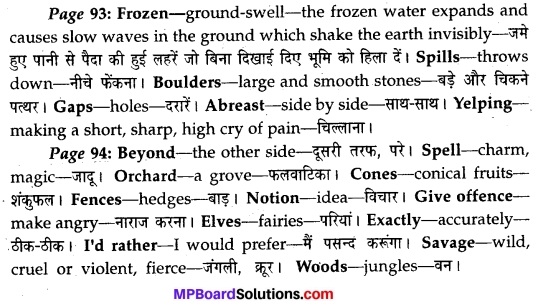
Mending Wall Some Important Pronunciations
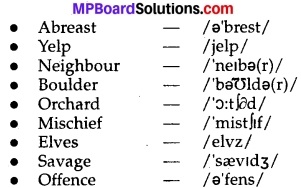
Hope that the above shaped information regarding the Madhya Pradesh Board Solutions for 10th English Chapter 11 Mending Wall Questions and Answers is useful for making your preparation effective. View our website regularly to get other subjects solutions.



